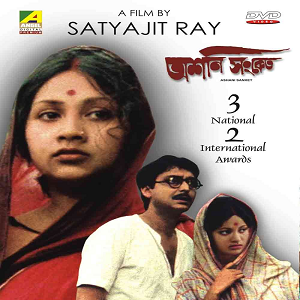Apr 23, 2025
Apr 23, 2025
 Satyajit Ray’s ‘Asoni Sonket’ (1973) depicts life in a village with the specter of famine looming large. When rice gets scarce, people stoop to the level of consuming snails in order to survive…the narrative progresses through Soumitro Chaterji, the lone Brahman in the village. He is a teacher, physician and priest – an all-in-one for the poor villagers who address him affectionately as Panditji. This languid paced color film by master filmmaker Satyajit Ray shows rural life and the frailties of human beings, especially of women who even becomes willing to trade flesh for a few morsel of rice for the family. It was based on a story by famed writer Bhibuti Bhusan Bandopadhyay.
Satyajit Ray’s ‘Asoni Sonket’ (1973) depicts life in a village with the specter of famine looming large. When rice gets scarce, people stoop to the level of consuming snails in order to survive…the narrative progresses through Soumitro Chaterji, the lone Brahman in the village. He is a teacher, physician and priest – an all-in-one for the poor villagers who address him affectionately as Panditji. This languid paced color film by master filmmaker Satyajit Ray shows rural life and the frailties of human beings, especially of women who even becomes willing to trade flesh for a few morsel of rice for the family. It was based on a story by famed writer Bhibuti Bhusan Bandopadhyay.
23-Jan-2013
More by : Subhajit Ghosh